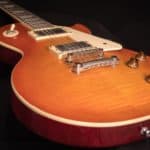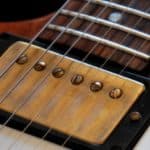When picking or building a new guitar the neck should be one of your main concerns.
If you think about it, it is the part of the instrument you will have the most contact with.
But how and how much does a guitar’s neck affect its tone? Here is a short answer:
The neck of a guitar has a great impact in both tone and feel. Different tonewoods will result in different tonal experiences. Its physical characteristics will subtract in varying ways from the string’s fundamental tone. Think of it as an EQ filter. The neck of a guitar can determine 60% to 70% of its tone.
For those who want a deeper dive into this topic, in this article, I will talk about how and how much neck wood matters in a guitar.
After that, I will describe the most common materials guitars are made of and their effects on tone.
Finally, I will answer some commonly related questions.
After reading this article you will have a clearer idea about the impact of different tonewoods can have on your guitar.
Are you ready to get started?
Let’s go!
Does neck material affect tone?
Neck material has really a significant impact on the tone of a guitar. I adhere to Paul Reed Smith’s idea on tone. By keeping it simple, Paul says that a tensioned string has a particular tone and that when it comes in contact with other materials these carve out some frequencies from that fundamental tone.
This idea of subtractive timbre makes real sense for a guitar. Think of it as if you were filtering frequencies with an EQ when picking different tonewoods. If you could replace the neck of a guitar with an identically shaped one from another material you will probably hear a difference in tone.
Of course, in some cases, there will be greater variability within 2 trees of the same species of wood than among 2 different varieties. You see, trees are heterogeneous living beings and you won’t find 2 identical ones.
It also goes without saying that not only the neck of a guitar has influence in tone but the combination of all of its components, as I said earlier.
Also, and to conclude this section, keep in mind that feel is also a very important factor when deciding upon a new instrument, and the neck will be the home of your fretting hand. Make sure you get a nice comfortable one.
How much does neck material affect tone?
Quantifying how much does the neck material of a guitar affects its tone is not easy and it would require a very professional scientific approach. I can’t offer you that. All I’m about to say is based on empiric and anecdotal evidence.
Leaving that out of the way, many players claim that the neck and body of a guitar have a 60% – 40% or even 70% – 30% relationship in terms of the effect on the final tone.
The bigger share the neck claims is explained by its smaller mass (10 to 12 times smaller) and by its more extensive contact with the strings and support of their vibrations.
Most common neck materials and their effect on tone
Guitar necks are made of multiple materials and all manufacturers have different motivations for their choice. From aesthetics to feel to tone, and also the interactions of the neck with every one of the other components of the instrument.
Here I will focus on tone.
These are the most common neck materials in guitars and their effects on tone:
Maple
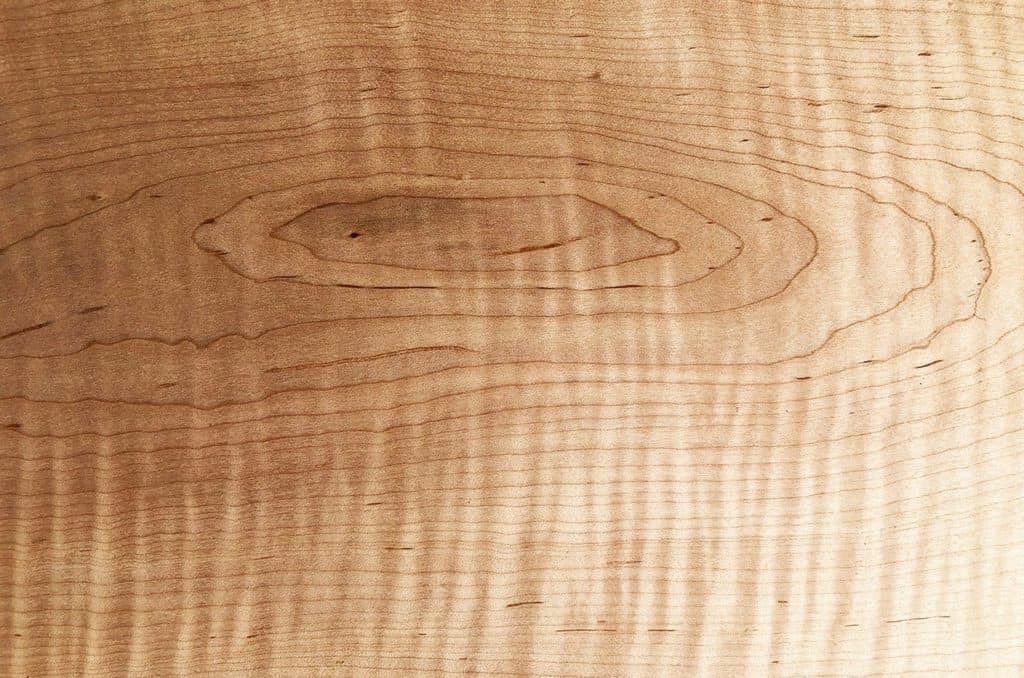
Maple is a light-colored hardwood very common in the USA and Canada. Professional bowling pins are made of this wood. For guitars, it’s usually used in necks and tops.
In terms of tone, Maple enhances upper-mids and high frequencies particularly, however, it also produces a tight, well-defined low end.
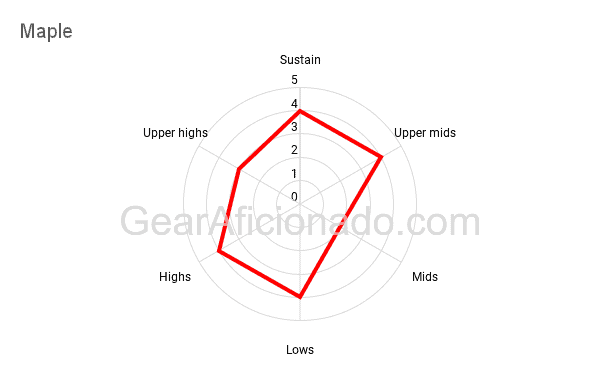
Roasted Maple
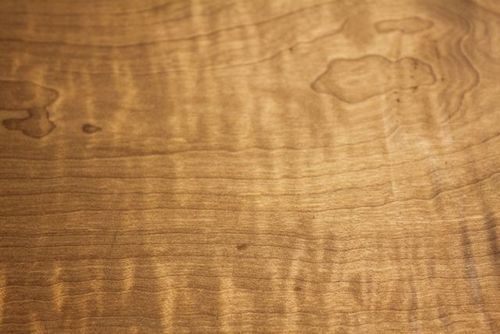
Roasted Maple, as its name implies is just thermally treated regular Maple. Exposure to high temperatures makes the wood more stable (less prone to bend due to weather changes) and changes its appearance and feel. This process also has the effect of making the material more brittle and harder to work with.
In terms of tone, Roasted Maple retains the same character as normal maple. It is still the same wood. Some people, however, argue that due to its extra brittleness it has an extra chime in the top end.

Mahogany
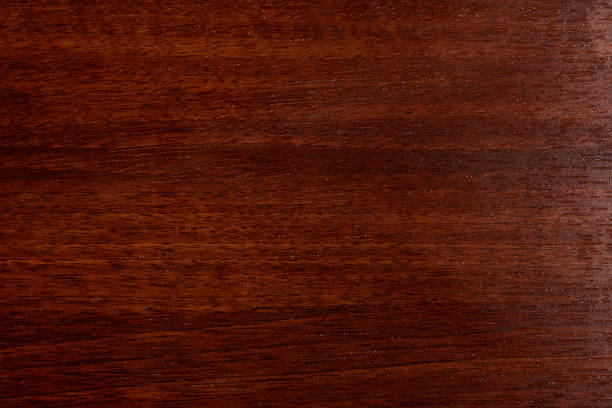
Mahogany is a hardwood with a fine, patterned grain native to the Americas. This is a heavy, resistant wood that’s commonly used to build furniture.
In terms of tone, Mahogany has a great low response that extends to the lower mid-range but cuts off slightly towards the high end, making it a very warm-sounding alternative.
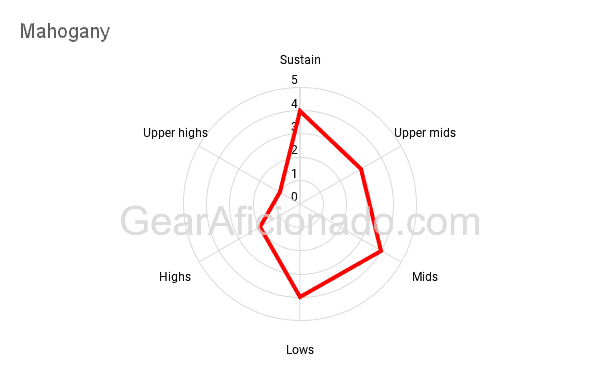
Rosewood
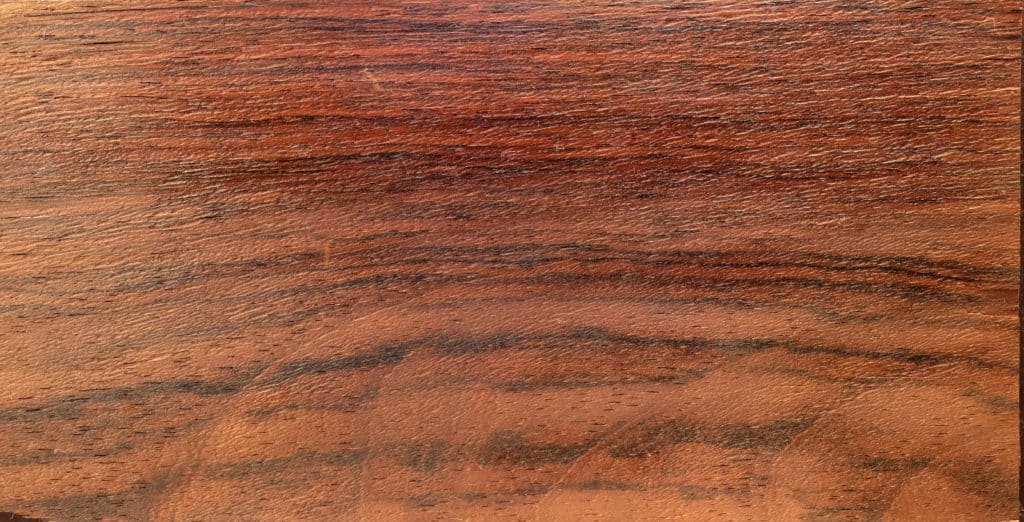
Rosewood is a durable dark-colored tonewood popularized by the use of its Brazilian variety used in vintage instruments, since regulations restricted its availability it was replaced, by most manufacturers, for the Indian variety.
In terms of tone, Rosewood is a very warm-sounding material known to cut off harsh high frequencies and making an instrument’s tone “rounder”.
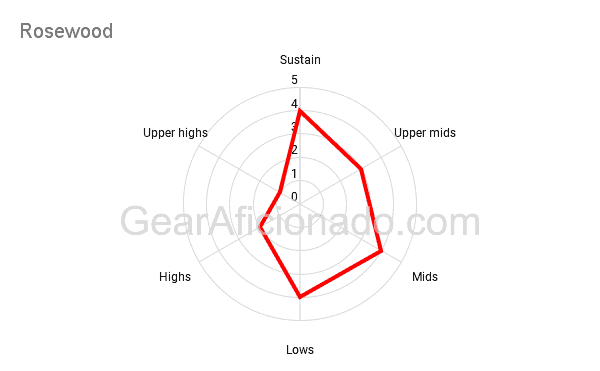
Cedar
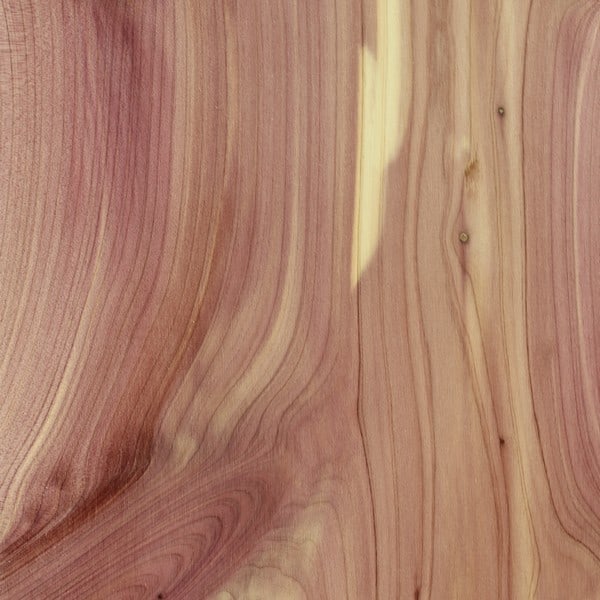
Cedar and particularly red cedar is a very common wood found in the US and Canada. It is commonly used for outdoor home purposes because of its natural ability to repel bugs.
In terms of tone, Cedar is somewhat dark. It has a nice response in lows that starts cutting off as you go higher in frequencies.

Okoume
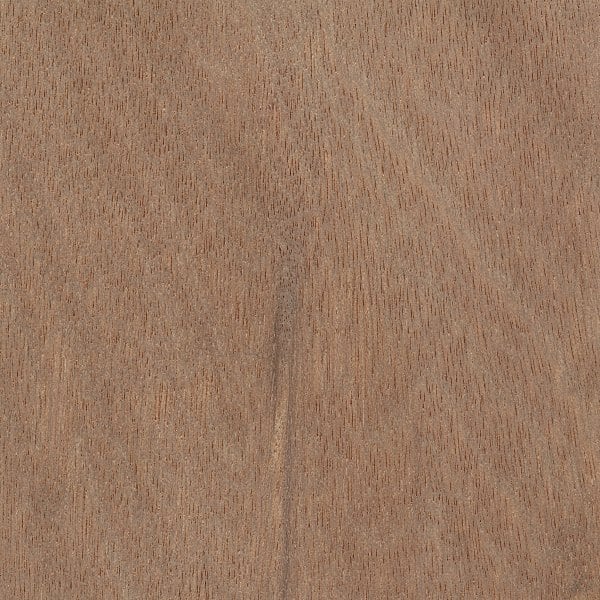
Okoume is often considered an Asian species of mahogany, however, technically it isn’t. It’s very similar, although.
In terms of tone, Okoume is a hardwood very similar to the one mentioned above, it has a dark sound, with strong mids and a cut-off in the higher frequencies.
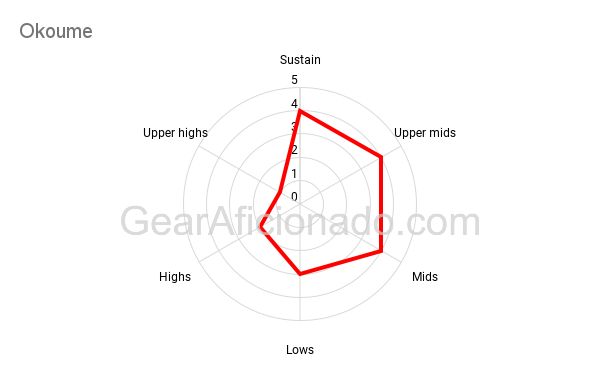
Bubinga
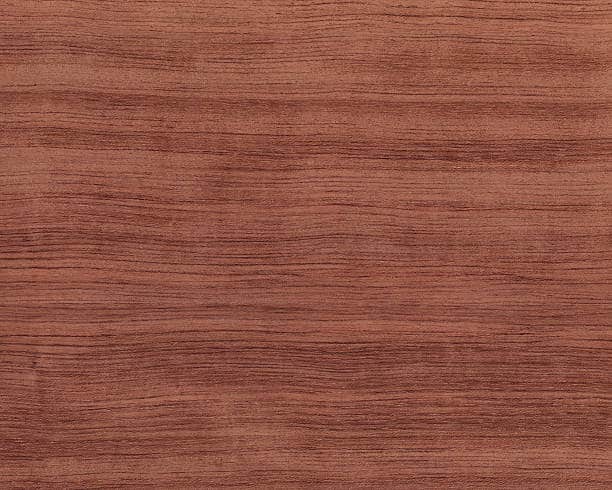
Bubinga is a tropical hardwood comparable to rosewood. Some even call it “African Rosewood”. Its tight grain looks gorgeous and makes for amazing finishes.
In terms of tone, Bubinga also has that tonal pattern present in rosewood: It’s warm and reduces harsh high frequencies.
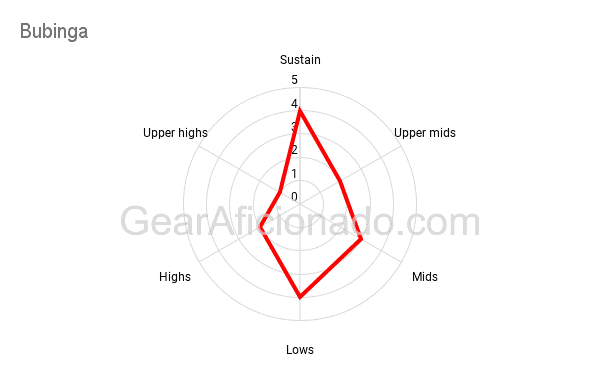
Wenge

Wenge is a black hardwood stiff and with brown stripes and open grain. It’s commonly found in Eastern Africa and preferred by many bass players.
In terms of tone, Wenge has strong midrange tones and warm lows. It’s also known to cut harsh frequencies from the high spectrum just like rosewood.
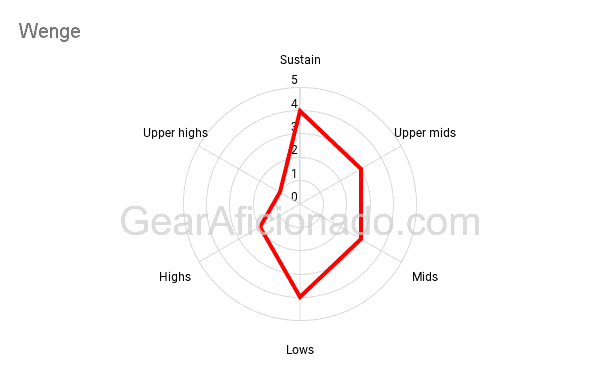
Walnut
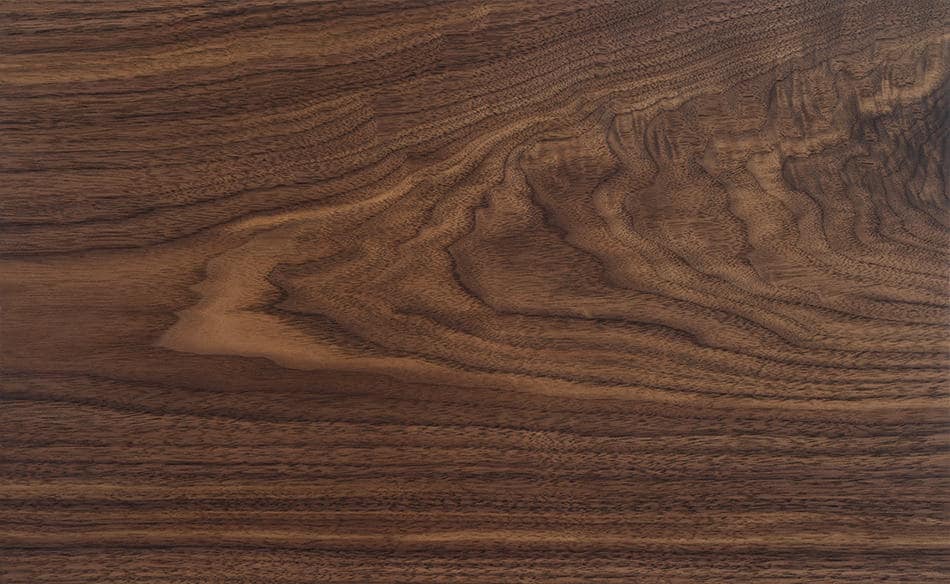
Walnut is a less common hardwood in mass-produced instruments, it is comparable to maple in terms of hardness and density, and it has an oily soft brown surface.
In terms of tone, Walnut offers a bright top end with a pronounced midrange and a deep low end. It also has a nice impact on sustain.
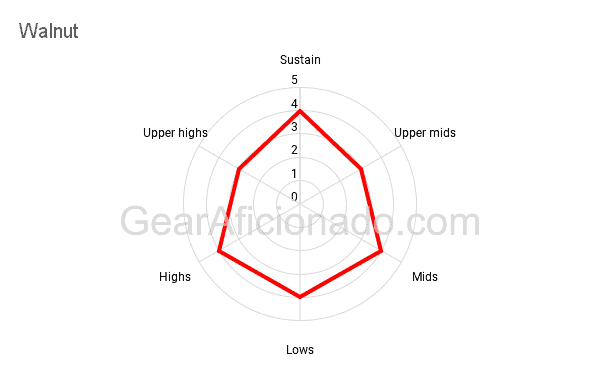
Pau Ferro
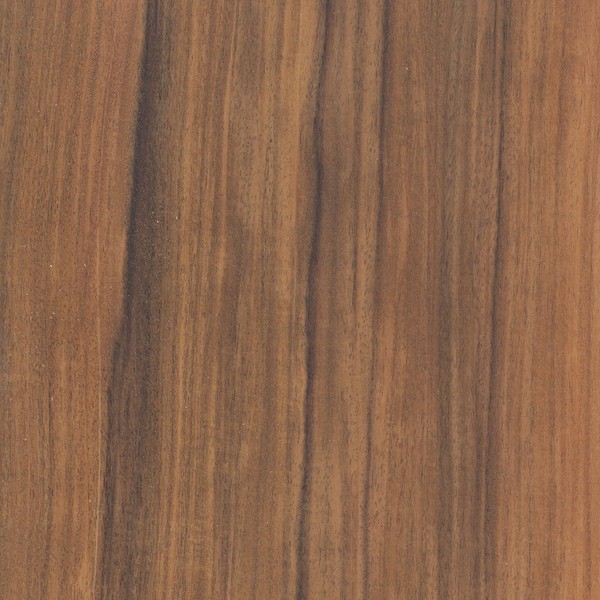
Pau Ferro is a South American tonewood, referred by some as “Bolivian rosewood”. It is slightly lighter in hue than traditional rosewood, but pretty similar in other aspects. However, these 2 species are not related.
In terms of tone, Pau Ferro, as you would expect, offers a pretty similar frequency response as rosewood with great low end, mids, and amazing sustain. The slight difference is that you could get a bit snappier high end with Pau Ferro.

Jatoba

Jatoba is a hardwood native to South America, and particularly common in Brazil. It is low cost and looks like a distant, clearer cousin of rosewood, however, they are not related. In fact, this tonewood isn’t quite as oily and it will require some extra care.
In terms of tone, Jatoba has nice lows like every other hardwood, a warm midrange, and a rather bright and clear top end.

What is the best neck material?
There is no such thing as the best neck material for a guitar. Different kinds of wood offer different properties that different kinds of players will love or hate.
Some will prefer the tone of Mahogany over the feel of Maple, and others will go for the opposite.
It’s of the essence that you get to try out as many different guitars made from different materials as you can so you could arrive at your own conclusions and define your particular preferences.
Every piece of wood has its own soul inside and some might not resonate with you, but when you find the right one, you will know.
That last sentence could also work as dating advice.
Does figured maple sound different or better?
Figured kinds of maple wood such as flamed maple or birdseye maple do not have a particular different effect on tone compared to the regular variety. These are mostly rarer and nice-looking alternatives that mostly serve aesthetic purposes.
The figure in a piece of wood will not affect an instrument’s tone per se. Although, perhaps more expensive figured slabs will be of better overall quality with less humidity and that will be something that could indeed affect the sound.
Do multi-piece guitar necks sound different or better?
Multi-piece guitar necks are made by gluing slabs of, in most cases, different types of wood. This kind of construction of course could have an effect on tone, but also could be an aesthetic choice.
As long as the gluing process is done correctly this will not have a detrimental effect on resonance and could broaden the spectrum of available tone possibilities for guitar builders.
On cheaper instruments, however, incorporating a multi-piece body part might be a way of reducing costs by not using bigger, more expensive slabs of a single material or by recycling smaller-than-a-neck pieces of wood that otherwise would have to be thrown away.
Conclusion and recommendations
Whether you are looking for a new guitar or planning on building or having one built, getting to know, at least at a high level how tonewoods work is, in my opinion, something that will help you make a better informed final decision.
However, here in GearAficionado, I always say that you should try out every instrument before buying it if you have the chance.
I don’t think anyone can really understand the sound of all these different tonewoods without getting to hear them live. At least try the ones that you think might work out better for you.
If it’s within your reach, try to get to play completely different guitars to clearly understand where the variation lies, and then start checking out ones closer to the one you preferred the most.
Finally, don’t forget to have fun. Technicalities for some people get the joy out of getting a new piece of gear. You don’t have to know it all about something that makes you smile. Just go and play the instrument that feels best to you.

Hello there, my name is Ramiro and I’ve been playing guitar for almost 20 years. I’m obsessed with everything gear-related and I thought it might be worth sharing it. From guitars, pedals, amps, and synths to studio gear and production tips, I hope you find what I post here useful, and I’ll try my best to keep it entertaining also.




